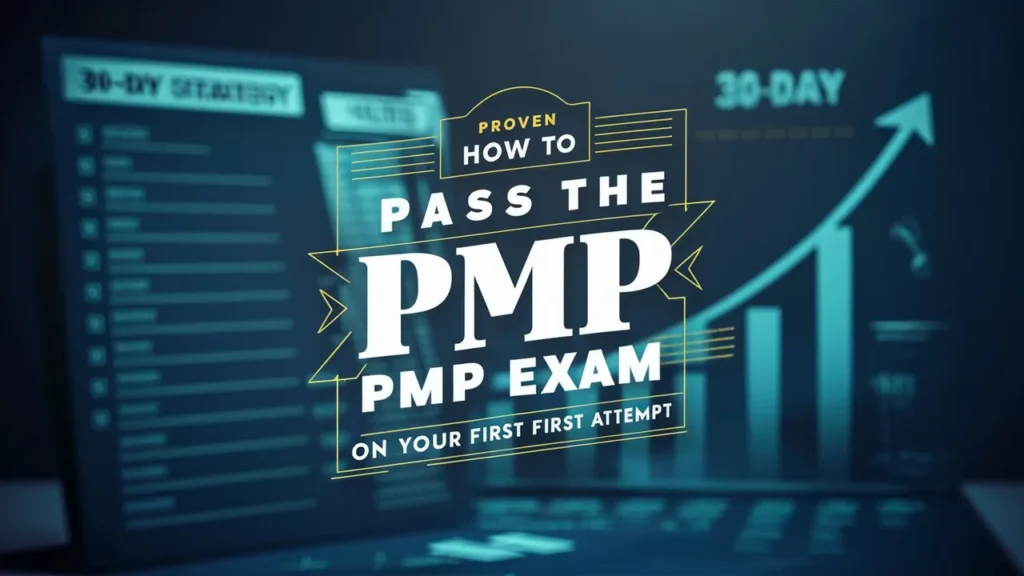Introduction
If you’re a project management veteran with 8-30 years of experience, you’ve faced your share of curveballs—stakeholder conflicts, scope creep, tight deadlines. As you prep for the Project Management Professional (PMP) certification, here’s a critical stat: 70% of PMP aspirants fail their first attempt, often tripped up by situational questions. These scenario-based challenges—making up 70% of the PMP’s 180 questions—test your ability to apply PMI’s framework under pressure, not just recite it.
Mastering how to tackle situational questions on the PMP exam is your ticket to success. This blog breaks down their structure, reveals PMI’s mindset, and equips you with strategies to turn your expertise into exam wins.
Quick Tip: Start by thinking like PMI—every answer hinges on their lens, not just your instincts. Let’s dive in and conquer those scenarios.
What Are Situational Questions on the PMP?
Their Role in the Exam
Common Formats
- Multiple-Choice: “A team misses deadlines—how do you respond?” (4 options).
- Drag-and-Drop: “Order the steps after a risk emerges.”
- Hotspot: “Click the process triggered by this delay.”
Note: 70% (126 questions) are situational, blending predictive, agile, and hybrid contexts.
Why They’re Tricky
- Ambiguity: Scenarios lack clear-cut answers—e.g., “Is this a risk or an issue?”
- PMI Bias: Your practical fix (e.g., “Call the sponsor”) might clash with PMI’s process (e.g., “Formal change request”).
- Complexity: Agile-hybrid twists—e.g., “Scrum project, fixed budget—what now?”
Your Edge: Your career’s chaos preps you—if you align it to PMI.
Example: Raj, a 15-year PM, flunked by guessing instinctively. Reframing via PMI’s lens saved his retake.
Understanding PMI’s Mindset
The PMI Lens
Key Principles to Apply
- Process-Driven: Follow the 49 processes—e.g., “Control Scope” for changes.
- Stakeholder Focus: Engage, don’t dictate—e.g., “Consult the sponsor.”
- Proactive Planning: Risks get responses, not reactions—e.g., “Refer to the risk plan.”
- Value Delivery: Align to goals—e.g., “What’s best for the project?”
Exam Key: Think “PMI first,” not “What I’d do.”
Agile and Hybrid Nuances
- Agile: Iterative, team-empowered—e.g., “Sprint review fixes delays.”
- Hybrid: Blend structure and flexibility—e.g., “Fixed scope, agile sprints.”
50% of questions test these—know Scrum (sprints), Kanban (WIP), and hybrid pivots.
Insight: Sarah, a 20-year PM, passed by shifting from “I’d call a meeting” to “PMI says update the stakeholder register.”
Strategies to Tackle Situational Questions
Analyze the Scenario
- Step 1: Identify the Context: Predictive, agile, or hybrid? E.g., “Sprints = agile.”
- Step 2: Pinpoint the Problem: Scope creep? Team conflict? Risk?
- Step 3: Match to PMI: Which Process Group (e.g., Monitoring) or Knowledge Area (e.g., Communication)?
Practice: “A stakeholder resists change mid-sprint—Monitor (Control Scope) or Execute (Manage Stakeholder Engagement)?” (Answer: Monitor—formal change first.)
Eliminate Wrong Answers
- Too Reactive: “Yell at the team”—PMI avoids confrontation.
- Non-PMI: “Skip documentation”—PMI loves process.
- Out of Sequence: “Close the project” when it’s mid-execution.
PMP scenario-based questions reward logic—cross off 2, weigh the rest.
Practice with Examples
- Scenario 1: “A hybrid project’s budget is fixed, but delays hit—what’s next?”
- Options: A) Cut scope, B) Sprint faster, C) Assess variances, D) Ignore it.
- Answer: C—Monitoring (Control Costs, EVM).
- Scenario 2: “A Scrum team misses velocity—how do you respond?”
- Options: A) Extend sprint, B) Coach team, C) Fire someone, D) Add tasks.
- Answer: B—People (team empowerment).
Drill: 50 scenarios via PMI Simulator—aim for 75-80%.
Success Story: Linda, a 12-year PM, aced scenarios by practicing 10 mocks—spotting PMI’s “assess first” pattern.
Applying Your Experience Effectively
Map Real-World to PMI
Your career’s goldmine—e.g., “I resolved that sponsor clash” becomes “Manage Stakeholder Engagement (Executing).”
- Steps:
- Recall a project—e.g., $3M rollout.
- Link to groups—e.g., Planning (WBS), Executing (team tasks).
- Match areas—e.g., Communication (status reports).
PMP exam strategies thrive on this—your instincts, PMI-fied.
Avoid Instinct Traps
- Trap 1: “I’d fix it myself”—PMI says delegate or process it.
- Trap 2: “Skip the paperwork”—PMI demands documentation.
- Fix: Ask, “What’s PMI’s next step?”—e.g., “Risk emerges—refer to Plan Risk Responses.”
Leverage Soft Skills
42% of questions (People domain) test leadership—your strength.
- Examples:
- “Team conflict”—coach, don’t punish (Manage Team).
- “Sponsor pushback”—engage, don’t argue (Stakeholder Engagement).
Your Edge: Decades of diplomacy—frame it PMI-style.
Case Study: Tom, a 25-year PM, failed by leaning on “quick fixes.” Mapping his soft skills to PMI’s People domain turned his retake into a win.

